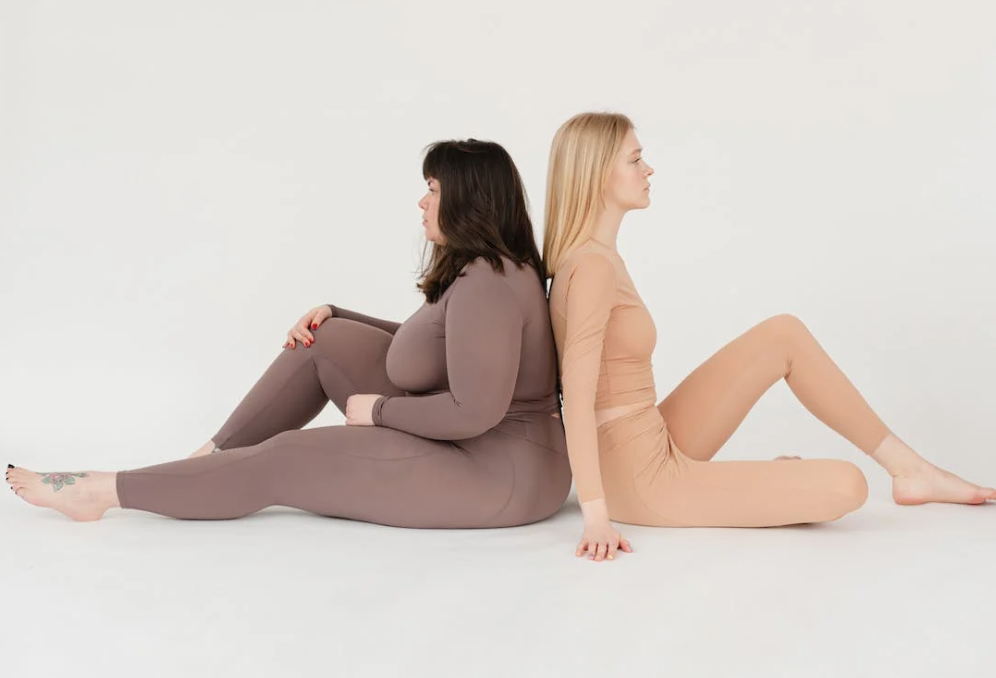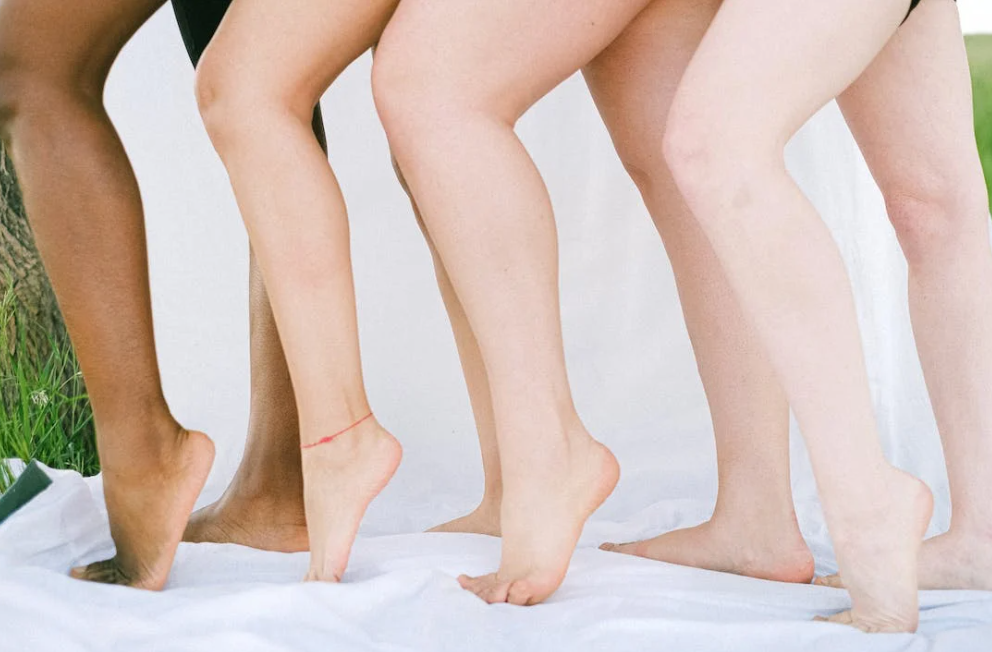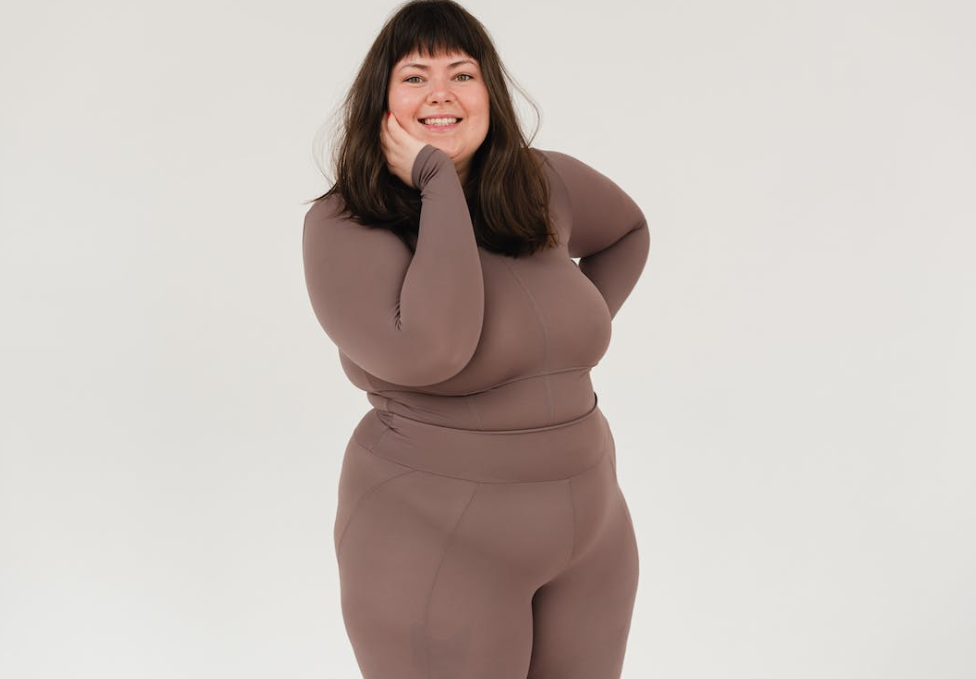Where Did Body Positivity Start
Discover the significance of being a positive thinker and accepting differences.

Selfpause Affirmation App
Download the app to get 1,000’s of affirmation meditations and everything you need to write, record and listen to your own.
When did Body Positivity first become a social movement? The movement was born from fierce fatties, often women of color, and it eventually spread from their circles to the rest of the world. Ultimately, Body Positivity led to the creation of social networking sites and digital media companies. Many of these brands and movements have become mainstream with the help of powerful plus-sized influencers.
Fat acceptance movement

The message of fat acceptance is important because it shows young people that they don’t lose value because of their size. In a culture where shame, negativity, and hate dominate the media, young people need to know that their size is not an insult to their intelligence, beauty, or potential. They also need to know that hard work will reward them the same as their peers.
The movement’s roots can be traced to the 1970s, when the Fat Underground, a group of feminists from California, decided to make fat people more comfortable in society by calling for more change. They called for the elimination of the diet culture as a social evil and demanded equal rights for fat people. They were able to make a huge impact in the United States and beyond.
This movement has evolved over the past few decades. It started with activism in the 1960s and moved into the digital age, with self-published zines and listservs. This helped to unite activists without attending conferences or in-person meetings. Many notable fat acceptance activists were involved in this movement, including Marianne Kirby and Kate Harding.
Since then, the body acceptance movement has become more mainstream, with a focus on promoting positive body image. The movement also stresses self-acceptance, inner worth, and appreciation for a person’s body. While body positivity started as a movement to promote body acceptance, it has evolved into a mainstream movement driven by mainstream media and corporate brand campaigns.
In the social media age, body acceptance gained popularity. Plus-size women, and especially white women with hourglass figures, were positioned as “radical role models”. Even underwear brands like Everlane launched a plus-size line. Even fitness instructors with tiny waists began to hashtag their workout posts using the hashtag #bodypositive.
Social media platforms

In the social media world, body positivity is making a big impact. It has started a movement and has spread across various social media platforms, including YouTube and Instagram. The goal is to change people’s minds about how they look. This movement can be very helpful if you’re having a difficult time figuring out what your ideal body looks like.
It started with the trend of showing “before and after” photos. These photos show women’s bodies as they are in their natural state, not as filtered as they are on Instagram. Some Instagram influencers, such as Lina Noory, have taken this trend a step further by using the hashtag #InstagramvsReality.
The concept of body positivity began with a social media movement in the early 2000s, and has since spread to a mainstream level. Many of the early members of this movement were black women, fat people, and queers. These social media communities focused on empowering marginalized bodies and empowering them to embrace their natural form.
Because of the popularity of this content, corporations are beginning to include more plus-size models in their campaigns. The result is a body positivity boom. Many brands now cast plus-size models in their advertisements, while others are opening their size ranges. Many still ignore women over size 20, but there’s a growing body positivity movement that has the potential to change that.
There are several celebrities that have become huge advocates for body positivity. Some of these celebrities are celebrities, models, and fitness instructors. Oftentimes, these celebrities share their journey with people who are struggling to figure out what works for them. Thankfully, these celebrities are helping people find their own confidence and self-esteem.
Plus-sized influencers

It wasn’t until the emergence of plus-sized influencers that the movement gained momentum. These women, many of them of a certain ethnicity or size, started the movement by championing themselves. In turn, smaller and thinner content creators adopted the body positivity hashtag and began using it in their posts. The main goal of the movement is to promote body acceptance.
Some plus-sized influencers are fashion-focused, and some have used their platforms to fight for a more positive body image. Tess Holliday is one such influencer. Aside from her fashion and beauty blog, the plus-size influencer also founded a body-positive clothing company called Alternative Curves.
Another plus-sized influencer is the creator of the popular body-positive fashion blog “The Identity of She.” This body-positive blogger is a pioneer in the body-positive movement, and she is famous for her funky fashion style. Her sexy, colorful wardrobe is guaranteed to make anyone feel good.
The trend of body positivity gained momentum in 2012, when the emergence of plus-sized influencers started to take off. After this, corporations began to integrate the influencers into their campaigns, promoting the idea of body positivity. The results of the campaign were dramatic, with more brands casting plus-size models and expanding their size ranges.
In addition to plus-sized influencers, there are many other types of influential people who promote body-positive body images and body-loving lifestyles. They aim to break down negative stereotypes and spread the message that natural beauty comes in all shapes and sizes. Aside from creating their own brand, plus-sized influencers also help small businesses promote their products and services on their social media channels.
Ashley Graham is one of the most famous plus-sized influencers of the current generation. She has used social media to advocate for a more positive body image, while also sharing her transgender journey. Her book, “He Said, She Said,” was released in 2019 and has received praise for her message of radical self-love.
Other movements
Several movements have been created around the idea of body positivity. Some of these are aimed at empowering women to love their bodies. These groups have been the subject of controversy over the years. Some claim that body positivity focuses too much on appearance and leaves out important aspects of one’s identity. Others point to the fact that body size is not the only determinant of self-worth.
In its early days, body positivity started as a social media movement on platforms like Facebook and Tumbler. The movement was led by Black women, disabled people, and queers. Its goal was to promote the acceptance of bodies that were perceived to be non-traditional or less-than-ideal. It also focused on promoting images of marginalized bodies, such as obese or overweight people.
The movement is a reaction to the harmful effects of body objectification. Body objectification, which includes comparing yourself to others or judging yourself based on your appearance, is associated with mental and physical health problems. However, body positivity has a rich history of social justice and body acceptance.
While this movement focuses on fat women, many other movements have had similar goals. The Fat Liberation Movement, for example, sought to make the fat community feel more welcome and equal. Activists slammed diet culture on television, protested fat-phobic advertisements, and declared radical self-love for their bodies. Its impact was far-reaching, and the movement was able to influence a number of industries and movements.
While body positivity has emerged in the last decade, the movement actually started much earlier. In the 1980s, plus-sized women championed fat activism, which eventually spread to smaller, thinner women. As part of this, fat activists became more visible, and some even began to use the #bodypositive hashtag.
Meaning of body positivity

The Meaning of Body Positivity is a movement that promotes acceptance, love, and a healthy relationship with the body. While most participants of this movement are women, men are also in need of body positivity. While women’s bodies have long been defined by standards of femininity, male bodies have been defined by the expectations of traditionally “masculine” bodies. Male bodies are usually portrayed as lean, white, and muscular.
Body positivity advocates strive to promote acceptance of bodies of all shapes, sizes, and sex. In their work, they often partner with disability, queer, and trans groups. As body size is just one of the many factors that define our bodies, body positivity advocates are striving to help people focus less on appearance and more on the health of the entire human body. According to the Office on Women’s Health, a healthy body image is “a sense of confidence and acceptance about one’s appearance.” A negative body image can lead to many mental health problems, including depression, anxiety, and other mental disorders.
Body positivity advocates emphasize the importance of focusing on things that make people feel good, not just on appearances. This includes eating salads, dancing in underwear, and having sex. People should embrace their bodies and celebrate them in all their imperfections, not just the flat abs and a healthy lifestyle.
The Movement focuses on marginalized bodies and emphasizes the importance of valuing all bodies. It also emphasizes the importance of embracing your body for who it is, regardless of size, shape, or ethnicity. Unfortunately, Instagram and similar websites often portray body positivity as a movement for thin white women.
Our Top FAQ's
Who is credited with starting the body positivity movement? The body positivity movement can be traced back to the 1960s and 1970s with the emergence of the fat acceptance and body liberation movements. These movements were led by groups such as the National Association to Advance Fat Acceptance (NAAFA) and the fat liberation movement, which aimed to challenge negative societal attitudes towards larger bodies and promote the acceptance of diverse body sizes and shapes. In the 1990s, the term “body positivity” began to be used more widely to refer to this broader movement, which sought to promote self-acceptance and celebrate the diversity of bodies.
What were the key events or milestones that led to the emergence of body positivity? The body positivity movement has a long history, with roots in the civil rights and feminist movements of the 1960s and 1970s. Key events and milestones that contributed to the development of the body positivity movement include:
-
The emergence of the fat acceptance and body liberation movements in the 1960s and 1970s, which sought to challenge negative societal attitudes towards larger bodies and promote the acceptance of diverse body sizes and shapes.
-
The formation of the National Association to Advance Fat Acceptance (NAAFA) in 1969, which aimed to promote size acceptance and combat weight discrimination.
-
The publication of “Fat Is a Feminist Issue” by Susie Orbach in 1978, which helped to bring attention to the issue of body image and the societal pressure to conform to a narrow standard of beauty.
-
The rise of the Internet and social media in the late 1990s and early 2000s, which provided a platform for body positivity advocates to share their stories and promote their message.
How has the body positivity movement evolved over time? The body positivity movement has evolved significantly over time. In the early days of the movement, the focus was largely on fat acceptance and challenging negative societal attitudes towards larger bodies. In more recent years, the movement has expanded to include a broader focus on self-acceptance and celebration of the diversity of bodies, regardless of size, shape, or appearance. The body positivity movement has also grown to include a wider range of voices and advocates, including people of color, LGBTQ+ individuals, and people with disabilities.
What are some common misconceptions about body positivity? Some common misconceptions about body positivity include:
-
That it promotes unhealthy or unhealthy behaviors: Body positivity is about promoting self-acceptance and self-love, not about encouraging unhealthy behaviors or promoting an unhealthy lifestyle.
-
That it is only for larger bodies: Body positivity is about celebrating the diversity of bodies, regardless of size. It is not about promoting one particular body size or shape over another.
-
That it is about being “perfect”: Body positivity is not about striving for perfection or trying to achieve an impossible standard of beauty. It is about accepting and celebrating ourselves as we are, flaws and all.
How has the body positivity movement impacted society and cultural attitudes towards body image? The body positivity movement has had a significant impact on society and cultural attitudes towards body image. It has helped to challenge the narrow, unrealistic standards of beauty that have been promoted by the media and society for decades and has encouraged people to embrace their own unique bodies and appearances. The movement has also brought attention to issues such as weight discrimination and body shaming, and has helped to promote more inclusive and diverse representations of bodies in the media.
